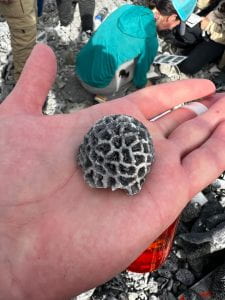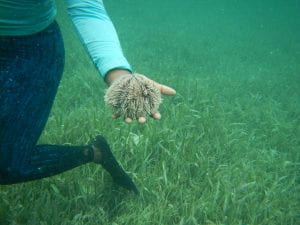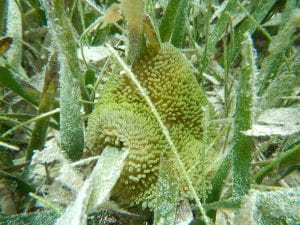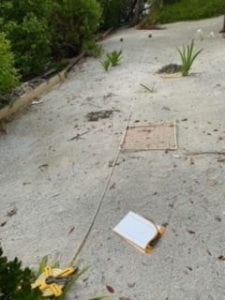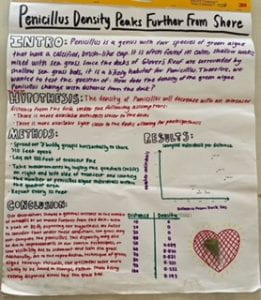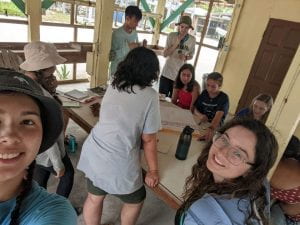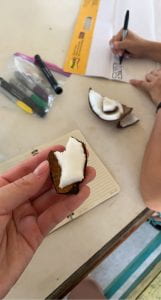Much like I am assuming most days on this trip will be, today was full of many new skills both in and out of the water. As a class, we seem to have graduated past simple scenic observational snorkeling and were tasked with developing and testing a research question for our afternoon snorkel. Utilizing a quadrat and a transect tape, we aimed to evaluate the prevalence of the macroalgae penicillus as we swam out away from the dock to closer waters. I must say, this was easier said than done. We thought the algae would be relatively easy to find, yet finding the marine equivalent of a green Truffula tree among a dense forest of also green seagrass did not go as smoothly as first thought. Yet, we managed to find a few, and created a poster outlining our results.
However, after lunch is when the truly exciting action took place. We went on a small walk (this time well protected from the ravenous mosquitoes) and ended up on the seaward side of the island where there is a graveyard of coral fragments. If you have seen the graveyard scene from The Lion King, it had similar vibes, yet in this case, the graveyard provided an unprecedented opportunity to look at the skeleton of stony corals. For my cards and presentations, I did a significant amount of research regarding the different stony corals of the Caribbean, yet many of the ways to tell the species apart is by the skeleton (which you would hope to not see on a healthy reef). This graveyard of coral provided the perfect opportunity to see these unique characteristics which are typically obscured by tissue. Porites divaricata, Pseudodiploria stigose, Acropora palmata and cervicornis, are just a few of the many of species that we saw and discussed. I also happened to find a piece of Eusmilia fastigiata, which was a rare and cool find.
After sadly leaving the coral graveyard, we wrapped the day up with several presentations covering Lionfish, herbivorous fish, piscivorous fish, and a fantastic yet kind of depressing presentation illustrating the future of our coral reefs. Another incredible day.
~Rusty
